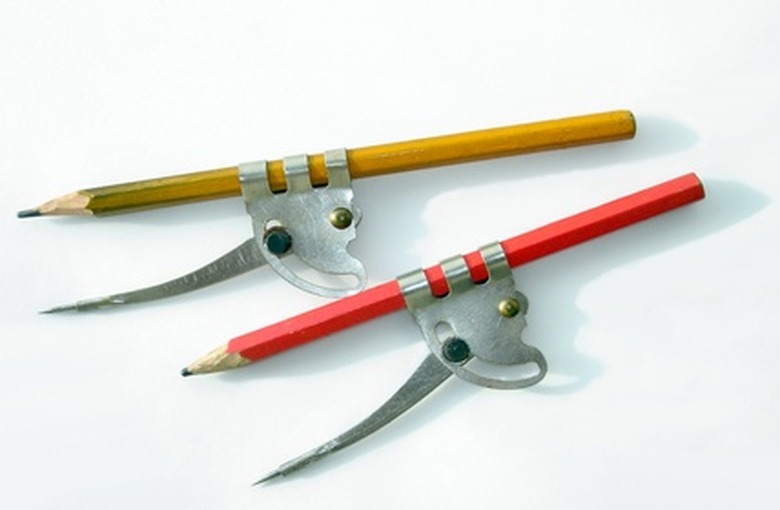How To Calculate The Outside Length Of A Circle
If you happen to be near a window and have a view of the outdoors, do you notice a heavy presence of circles? Car, truck and bicycle tires, utility-hole covers on streets, and a few other human-constructed entities fit the description. A lot of other things, such as auto headlamps and various elements of architecture, are "round," if not precisely circular.
In the natural and mathematical worlds, two-dimensional circles and their counterparts in three-dimensional space, spheres, take on supreme importance. After all, the Earth itself, along with most other celestial bodies, is roughly spherical and forms a circle, or disk, on cross-section.
The distance around any circle can be determined from knowing how wide the circle is, and this seemingly arcane observation finds its way into a surprising number of physics and engineering problems, thanks in large part to the famous mathematical constant π ("pi").
Essential Circle Definitions
Essential Circle Definitions
To form a circle, start from any point A on a plane, or flat surface, and move in a given direction in a straight line until you feel like stopping (point r). Then, turn left or right, and walk until you return to your first stopping point (r), keeping the distance between yourself and your original starting point (A) exactly the same throughout.
You have just traced out the circumference C of your newly formed circle. The distance you traveled from the center of the circle A to the edge of the circle r is the radius r, and the farthest distance across the circle is the diameter D, equal to 2r. All circles are the same shape, but of course not necessarily the same size.
If someone uses the term "length of circle," try to get a clarification; this might mean the length across the width of the circle (the diameter) or some other portion of the circle (a chord), or it might mean the length the entire way around the circle (circumference).
Area and Circumference of a Circle
Area and Circumference of a Circle
Now, you get an introduction to the constant π, the Greek letter pi. This is an irrational number, or a decimal number that never terminates and cannot be exactly expressed as a fraction. However, for most purposes, the fraction 22/7, or about 3.14286, is close enough for use in non-engineering-level calculations.
The circumference and diameter of a circle are related by the relationship C = 2πr, and by extension, by the relationship C = πD. Thus, knowing the radius of a circle allows you to compute its circumference and conversely.
The area of a circle is also related to the radius (or diameter, if you prefer) using the constant π, with area A = πr2. This means that if you want to express area in terms of circumference, you would solve the equation C = 2πr and substitute:
r = C/2π
A = π(C/2π)2
A = C2/4π
Area and Volume of a Sphere
Area and Volume of a Sphere
Since you're here, you might as well take a glimpse up the ladder of regular geometric figures into three-dimensional space. If you have the circumference of a sphere (that is, distance around its widest point, like the Equator circling a globe of the Earth), you can compute its radius, and you can then use r to figure out the surface area and volume of the sphere:
Asphere = 4πr2
Vsphere = (4/3)πr3
Diameter of a Circle Calculator
Diameter of a Circle Calculator
You can use an online tool such as the one found in the Resources to experiment with different inputs of a circle (radius, diameter, circumference, area) to see what happens to the outputs. In particular, pay attention to how area and circumference change with the same step-wise change in radius.
Which increases more rapidly as a function of r, the area A or the circumference C? Why, mathematically, did you pick your answer?
Cite This Article
MLA
Beck, Kevin. "How To Calculate The Outside Length Of A Circle" sciencing.com, https://www.sciencing.com/calculate-outside-length-circle-5976916/. 26 March 2020.
APA
Beck, Kevin. (2020, March 26). How To Calculate The Outside Length Of A Circle. sciencing.com. Retrieved from https://www.sciencing.com/calculate-outside-length-circle-5976916/
Chicago
Beck, Kevin. How To Calculate The Outside Length Of A Circle last modified August 30, 2022. https://www.sciencing.com/calculate-outside-length-circle-5976916/
